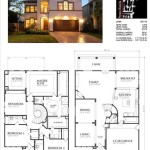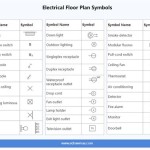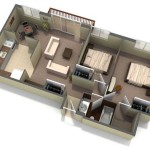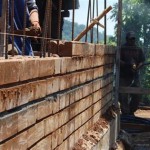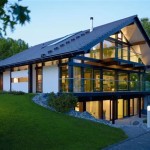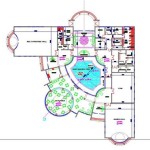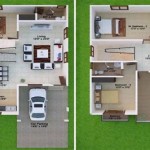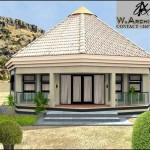1960s Ranch Style Floor Plans: A Retrospective
The 1960s marked a significant era for residential architecture in the United States, with the ranch style house reaching peak popularity. This architectural style, characterized by its single-story layout, open floor plans, and connection to the outdoors, reflected the post-war boom and evolving family dynamics. Understanding the typical floor plans of 1960s ranch homes provides valuable insights into the design principles and lifestyle preferences of that period.
One of the defining features of 1960s ranch house plans was the emphasis on horizontal lines. These homes were often wider than they were deep, embracing a low-slung profile that blended seamlessly with the surrounding landscape. The focus on horizontality was further emphasized by elements like extended rooflines, large windows, and attached carports or garages that stretched along the front façade.
Open concept living was another hallmark of these homes. Unlike earlier compartmentalized designs, 1960s ranch floor plans often combined the living room, dining area, and kitchen into a single, flowing space. This layout fostered a sense of community and facilitated interaction among family members. The elimination of walls and doors also created an illusion of spaciousness, making even modestly sized homes feel larger.
The connection to the outdoors was a central theme in 1960s ranch house design. Large picture windows and sliding glass doors were commonly used to bring natural light and views into the home. Patios, decks, and courtyards extended the living space outdoors, providing areas for relaxation and entertainment. These outdoor spaces were often accessed directly from the main living area, blurring the lines between indoors and out.
Bedrooms in 1960s ranch homes were typically clustered together on one side of the house, offering a degree of privacy from the common living areas. These bedrooms were often relatively small and simple in design, reflecting a shift away from the more formal bedrooms of earlier eras. Built-in closets were a standard feature, providing convenient storage solutions.
Bathrooms in these homes were often functional and straightforward, featuring a single sink, toilet, and bathtub/shower combination. The use of colored fixtures, such as pink or turquoise sinks and tubs, was a popular trend during this period. While some larger ranch homes might have included a master bathroom en suite, this was not as common as it is in contemporary homes.
The kitchen in a 1960s ranch house typically served as the heart of the home. While smaller than modern kitchens, they were designed for efficiency and featured built-in appliances, ample counter space, and convenient storage solutions. The L-shaped or U-shaped kitchen layout was prevalent, maximizing functionality within a limited footprint.
Variations in 1960s ranch house floor plans existed based on regional influences and individual preferences. Some homes featured a split-level design, with a partially raised or lowered basement level. Others incorporated attached garages or carports, offering convenient access to vehicles and additional storage space. The size and configuration of the house also depended on the size of the lot and the family's needs.
The popularity of fireplaces in 1960s ranch homes added to their appeal. Often centrally located in the living area, the fireplace served as a focal point and provided warmth and ambiance. Brick or stone fireplaces were common design choices, contributing to the overall aesthetic of the home.
Garages, though not always integrated into the main structure, were a common feature of ranch homes. Attached garages often accessed directly into the kitchen or a utility area, providing convenient entry and exit. Detached garages provided additional storage or workshop space, reflecting the DIY ethos of the era.
Examining 1960s ranch house floor plans reveals a focus on practicality, functionality, and a connection to the outdoors. The open-plan layout, emphasis on horizontal lines, and integration of outdoor living spaces reflected the changing lifestyle and family dynamics of the post-war era. These designs continue to influence contemporary residential architecture, demonstrating the enduring appeal of the ranch style home.
The relatively simple construction methods employed in building these homes contributed to their affordability and widespread appeal. Common building materials included wood framing, brick veneer, and concrete slab foundations. These readily available materials allowed for quick and efficient construction, meeting the housing demands of a growing population.
While the popularity of the ranch style waned in later decades, their influence can still be seen in many contemporary home designs. The open concept living spaces, connection to the outdoors, and emphasis on functionality remain desirable features for many homeowners. Understanding the floor plans of 1960s ranch homes provides a valuable context for appreciating the evolution of residential architecture and the enduring appeal of this iconic style.

Vintage House Plans 1960s Homes Mid Century Ranch

C 1960 Storybook Ranch Plan House Plans Bungalow Floor Style

1962 National Plan Service Ranch House Plans Basement Blueprints
Ranch Homes Then And Now

The Lauderdale 1960 Vintage House Plans Beaver Homes And Cottages

Case Study How To Fix A Bad Ranch Floor Plan Midmod Midwest

Ranch Plan 1960 Square Feet 3 Bedrooms 2 Bathrooms Ina

See 125 Vintage 60s Home Plans Used To Design Build Millions Of Mid Century Houses Across America Americana

Retro House Plans Mid Century Modern Home

130 Ranch Houses And Cars 1950s 1960s Ideas House Plans Mid Century Vintage

